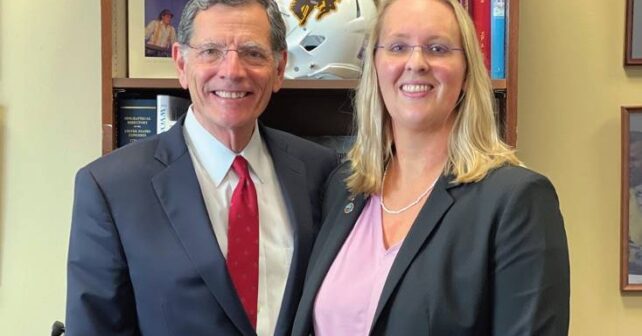
Makenzie Bartsch, MD, was entering her third year of her emergency medicine residency in the summer of 2021 when her medical school leaders called a meeting with her and the other emergency medicine residents from Wyoming who had been part of the WWAMI Medical Education Program, the UW School of Medicine’s multi-state medical education program. These residents were ready to find employment back in their home state of Wyoming—a requirement of the contract they signed with WWAMI on their first day of medical school—but the program directors had bad news for them: There were no emergency medicine jobs open in Wyoming. And if they couldn’t find employment in Wyoming within a year of finishing residency, they would be on the hook for the loans provided by the state to pay for their medical school education, plus additional financial penalties. It was an unexpected sucker punch to their future prospects.
Explore This Issue
ACEP Now: Vol 41 – No 07 – July 2022Emergency medicine workforce issues play out across the country in a variety of ways, but the state of Wyoming has unique circumstances. It’s part of the WWAMI program, a partnership with the University of Washington to supply the states involved—Wyoming, Alaska, Montana, and Idaho—with a guaranteed physician workforce. (The WWAMI acronym stands for all the states involved.) Due to the scarcity of medical schools in these states, legislators partnered with the state of Washington and the University of Washington to allot a specific number of the medical school’s seats to each state.
Wyoming receives 20 seats per year and those spots are funded by the state. Students from Wyoming in the WWAMI program sign contracts requiring them to return to work in their home state within one year of completing their training. If they work in Wyoming for three years, the money that the state paid on their behalf to the University of Washington (estimated at approximately $240,000) will be forgiven. Once their training is completed, Wyoming WWAMI-funded physicians get a 12-month grace period to find a job before their contracts enter repayment status, with eight percent interest accruing during those 12 months.
Wyoming native Carol Wright Becker, MD, FACEP, went to medical school through the WWAMI program and was working in different emergency departments in the state when she started precepting for WWAMI. As Dr. Wright Becker got more involved in the educational side of WWAMI, she was keeping an eye on what was happening at the national level. She was serving as president of the Wyoming Chapter of ACEP in early 2021 when the results of the Emergency Medicine Physician Workforce Report were released, projecting an oversupply of emergency physicians by the year 2030. (Visit acep.org/workforce to view the report.) Dr. Bartsch was actually one of the first medical students Dr. Wright Becker mentored as a preceptor.
Pages: 1 2 3 4 | Single Page




No Responses to “Wyoming Has a Different Kind of Bounceback Problem ”